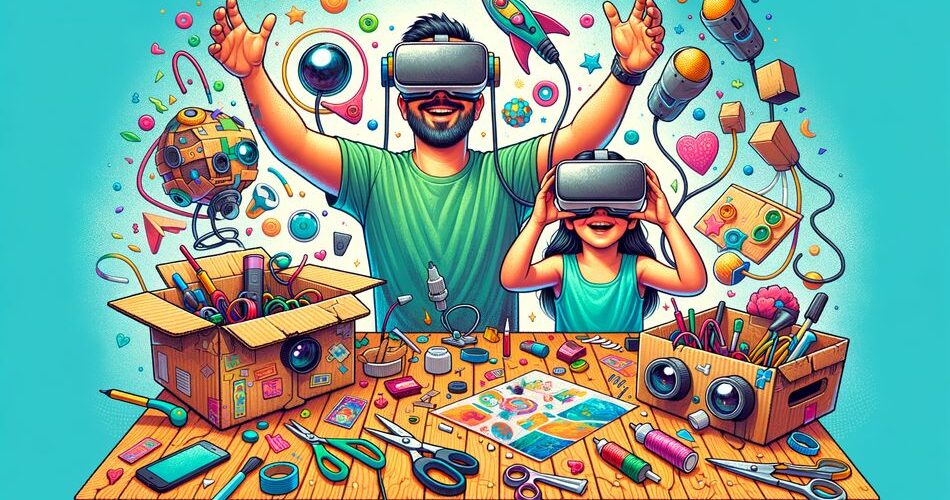Welcome to Growing Together, where we offer expert parenting tips and child development advice to support your parenting journey from newborns to teens. Today, we’re excited to dive into the world of DIY Virtual Reality (VR) experiences, a fun and innovative way to craft immersive adventures with your kids. Whether you’re a tech-savvy parent or a beginner, creating VR experiences at home can be a magical and educational bonding activity.
Why Virtual Reality?
Virtual Reality has revolutionized the way we experience digital content. It provides an immersive environment that allows users to explore, interact, and learn in new and exciting ways. For children, VR can be both educational and entertaining. It can stimulate their creativity, enhance problem-solving skills, and even provide a new way to learn different subjects. By involving your kids in crafting their own VR experiences, you’re not only offering them a fun activity but also valuable technological skills.
Getting Started
Before diving into creating VR experiences, you’ll need some basic materials. Fortunately, you don’t need to break the bank to get started. Here’s a list of essentials:
- Smartphone: Most modern smartphones are capable of running VR apps.
- VR Headset: Affordable options like Google Cardboard can convert your phone into a VR viewer.
- Computer: A standard PC or laptop for creating and managing VR content.
- VR Apps and Software: Free or low-cost software like CoSpaces Edu, Tinkercad, or Blender can be used to design VR environments.
Creating Your Own Content
Now that you have your materials ready, it’s time to start creating your own VR content. Here’s a step-by-step guide to help you get started:
1. Plan Your VR Adventure
The first step is to brainstorm and plan the type of VR experience you want to create. Involve your kids in this stage to make it a collaborative effort. Whether it’s a journey through space, a visit to a historical site, or an underwater exploration, the possibilities are endless. Write down your ideas and create a rough storyboard.
2. Design the Environment
Use user-friendly software like CoSpaces Edu or Tinkercad to start designing your virtual environment. These platforms often provide tutorials to help you get acquainted with the tools. Encourage your kids to contribute their ideas and designs, turning it into a creative project.
3. Add Interactive Elements
To make your VR experience more engaging, add interactive elements. This could be clickable objects, hidden surprises, or quiz questions related to the theme of your VR adventure. Platforms like CoSpaces Edu allow you to incorporate coding using a visual programming language, which can be a great introduction for kids to learning programming logic.
4. Test and Refine
Once your virtual environment is ready, test it using a VR headset. Walk through the experience and make note of any areas that need improvement. This is an excellent opportunity to teach your kids about iterative design and problem-solving. Make the necessary adjustments and test again until you’re satisfied with the final product.
Enjoying Your VR Adventure
After completing your VR project, it’s time to enjoy the fruits of your labor. Gather the family, strap on the VR headset, and embark on the immersive journey you’ve created. This shared experience can be a wonderful way to bond, explore new places, and learn together.
Additional Tips
- Safety First: Always supervise your children when using VR to ensure they have a safe and comfortable experience.
- Set Time Limits: VR experiences can be intense, so it’s important to take breaks and avoid prolonged use.
- Encourage Creativity: Use this opportunity to inspire your children to think creatively and explore their interests.
Conclusion
DIY Virtual Reality experiences offer a unique blend of fun, creativity, and education, making them a perfect activity to enjoy with your kids. By involving them in the process of creating their own VR adventures, you’re not just entertaining them, but also teaching valuable skills and fostering a love for technology. At Growing Together, we believe in the power of shared activities to strengthen family bonds and promote child development. So, gather your materials, spark your imagination, and start crafting unforgettable VR experiences with your kids!

